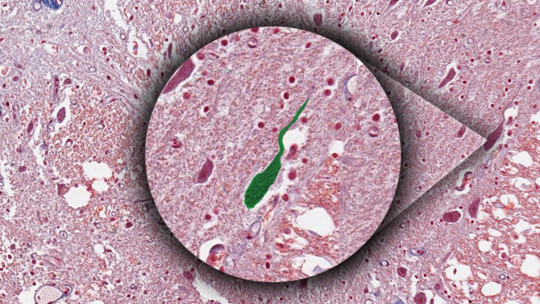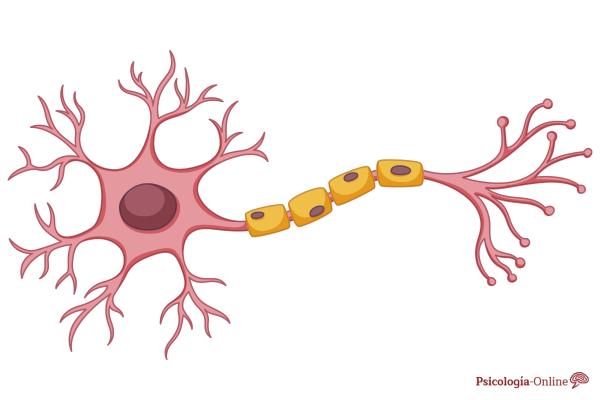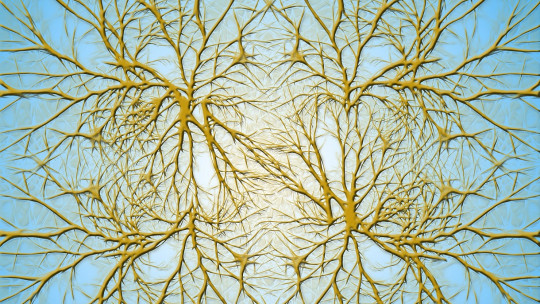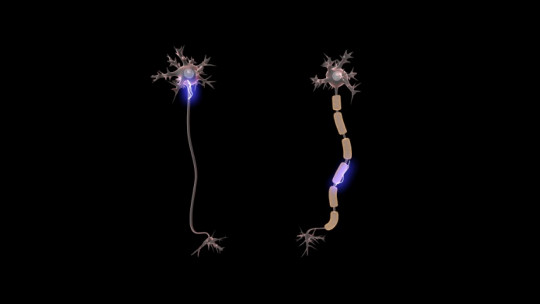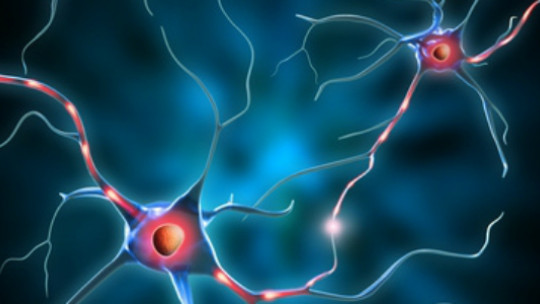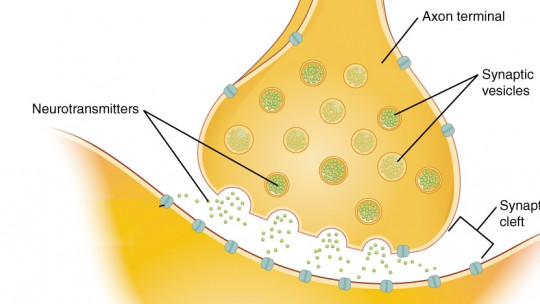One of the most common classifications of neurons is the one carried out based on their morphology; More particularly, they are usually divided according to the number of dendrites and axons that their cell body has.
In this article we will describe the characteristics of the main types of multipolar neuron, much more common than bipolar and pseudounipolar in the central nervous system of human beings.
Characteristics of multipolar neurons
Multipolar neurons are mainly characterized by presenting a single axon along with multiple dendrites , extensions whose main function is the reception of synaptic impulses. This type of neuron specializes in integrating information from other nerve cells.
This type of neuron is the most numerous in the central nervous system; its quantity is very high in the cerebral cortex, spinal cord and ganglia (sets of cell bodies) of the autonomic nervous system. Technically any neuron with an axon and at least two dendrites is considered a multipolar neuron.
As a general rule, multipolar neurons have a soma with an approximately ovoid shape. From this cell body, multiple dendrites emerge that extend in all directions, forming tangled-looking branches. These dendritic trees give the neuron a larger area in which to receive nervous stimuli.
The axons of this type of neuron are usually very long, which facilitates the transmission of impulses throughout the central nervous system. They are frequently covered by Schwann cells, a type of neuroglia that form the myelin sheaths in this part of the nervous system; This substance allows neuronal transmission to be efficient and fast.
multipolar neurons They can be divided into two subtypes: class A and class B Type A has very thickly branched dendritic trees and many dendritic spines. In contrast, both characteristics are much less marked in class B multipolar neurons, which also have a larger soma.
Types of multipolar neuron
Below we will describe three of the most relevant and numerous types of multipolar neuron in the human body: Purkinje cells, pyramidal cells and Dogiel cells. Each of them has its own peculiarities, locations and functions.
1. Purkinje cells
Purkinje cells are located in the cerebellum, the back part of the brain, responsible for coordination and supervision of movements. The appearance of these neurons is very characteristic due to the density of its dendritic trees which explains the strong role they play in receiving neural impulses.
2. Pyramidal cells
Pyramidal cells or upper motor neurons originate in the motor cortex. This type of multipolar neuron transmits action potentials through the corticospinal tract to the lower motor neurons of the spinal cord, which allow movement by synapsing with muscle cells
Furthermore, pyramidal cells are fundamentally involved in cognition. This function is associated with the connections between pyramidal neurons and the prefrontal cortex of the brain. Its possible role in visual object recognition has also been hypothesized.
3. Dogiel cells
Dogiel cells are a type of multipolar neuron located in the prevertebral sympathetic ganglia. They are part of the enteric nervous system, which regulates the functioning of the gastrointestinal tract.
Other types of neuron
Neurons can be classified based on different criteria. For example, if we divide them according to their function we find sensory neurons, motor neurons and interneurons or association neurons. Likewise, we find excitatory, inhibitory and modulatory neurons if we look at the type of synapses they carry out.
The term “multipolar” is framed in the classification of neuron types according to their external morphology More specifically, dividing neurons by the number of processes (i.e., dendrites and axons) we can distinguish between multipolar, bipolar, pseudounipolar, unipolar, and anaxonic neurons.
1. Bipolar
The cytoplasm of bipolar neurons has two processes; One of them acts as a dendrite, receiving impulses from other neurons, and the second plays the role of an axon, sending them. They act mainly as sensory neurons and they are located in the spinal ganglia, in the vestibulocochlear nerve, in the retina or in the olfactory epithelium.
2. Unipolar
In these neurons, both the axon and dendrites originate from a single extension of the cell body. They do not exist in the human organism, although they do exist in other living beings.
3. Pseudounipolar
Pseudounipolar neurons are a type of bipolar neuron whose axon divides in two to form the dendrites and the axon, so that They seem unipolar, although they are not Unlike true unipolar neurons, these are found in the human body.
4. Anaxonic
We say that a neuron is anaxonic when it does not have any axon or when it cannot be distinguished from the dendrites. Cells of this type act mainly as interneurons.



